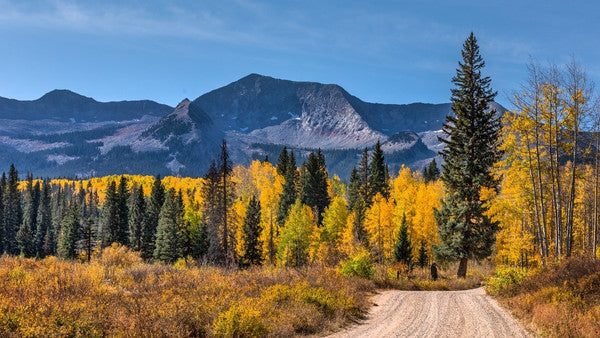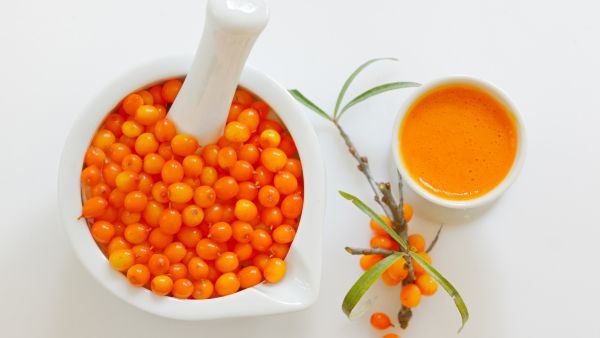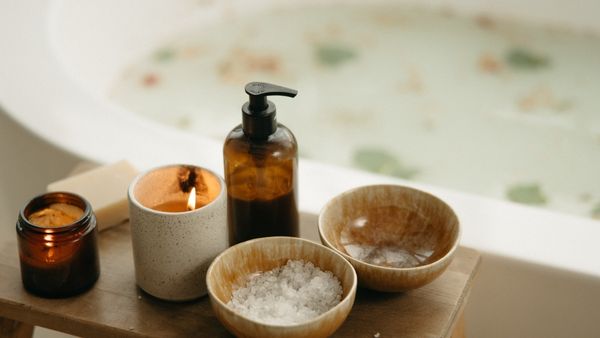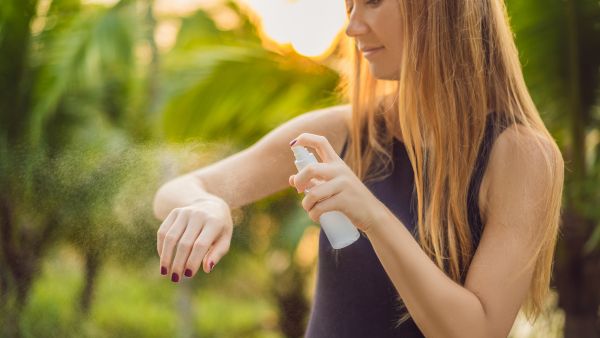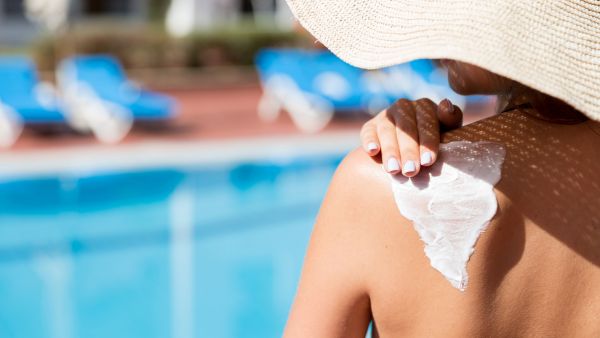Why Your Skin Reacts During Allergy Season (and What to Do About It)
We've discussed how pollution damages the skin, and now, you can add pollen to the list of environmental skin assaults. That fine powdery substance emitted from flowers during germination causes more problems than sneezing and itchy eyes.
Data presented by Estée Lauder Companies at the Annual Meeting of the Society for Investigative Dermatology showed that pollen makes up a significant amount of particulate pollution and has been demonstrated to be damaging to the skin¹.
The bad news is that you can't control the levels of pollen pollution in the air. The good news? You can totally safeguard your skin against them—and natural antioxidants and barrier-strengthening ingredients are a great place to start.
Similar to the radiance-sapping, pigment-producing effects of pollution like car emissions, smoke, chemicals, and UV rays, pollen also has the ability to attack skin cells.
How does pollen damage the skin?
Pollen inhibits collagen production
"Pollen can enter the skin itself through hair follicles," explains Dr. Charlene DeHaven, M.D., Clinical Director at iS Clinical².
One of the major ways it affects the skin is by restricting collagen production—the protein that gives skin its strength and elasticity. Without collagen, skin tends to look slack, deflated, and peppered with fine lines and wrinkles.
What to do? Antioxidants such as vitamin C are effective in shielding against the skin-ravaging effects of pollen. And according to dermatologists, vitamin C is essential for collagen synthesis. The Edelweiss in our Aspen Dew Illuminating Essence has twice the free radical scavenging power of brightening Vitamin C!
Recent insights further reinforce this: the inflammatory response initiated by pollen exposure can accelerate collagen degradation over time, contributing to premature aging. Just as oxidative stress from UV light breaks down collagen fibers, environmental allergens like pollen create an inflammatory cascade that harms skin structure.
A 2023 review in the Journal of Cosmetic Dermatology highlights the link between airborne allergens and increased matrix metalloproteinase (MMP) activity, enzymes that degrade collagen and elastin—key proteins for firm, youthful skin³.
Pollen can lead to an inflammatory response on the skin
Inflammation can present itself as a rash, itchy areas, and redness—and is also a trigger for skin conditions like eczema, psoriasis, and rosacea.
"People with sensitive or sensitized skin are most vulnerable to pollen irritation," says Dr. Meder. "However, anyone with oily or acne-prone skin isn’t necessarily immune. The enlarged pores and inflammation associated with oilier skin types allow the pollen proteins to penetrate into the skin through follicles and open sebaceous glands."
How to stop it:
Meder advises that "irrespective of your skin type or shade, the best advice is to treat skin gently," using products like our The Purist Delicate Skin Serum that fortifies the skin from the direct effects of pollen without aggravating sensitivity.
It’s not just about visible irritation. Pollen can stimulate histamine release in the skin, triggering micro-swelling, redness, and a tight, itchy feeling. For those managing inflammatory skin conditions like eczema, rosacea, or psoriasis, pollen exposure can tip the scales toward flare-ups.
A comprehensive review published in Nature Reviews Disease Primers highlights the close connection between airborne allergens and worsening of atopic dermatitis and similar inflammatory conditions⁴.
Pollen may damage the skin barrier
If the skin's barrier function is weakened, the skin tends to become dry, itchy, and irritated.
To counteract the damage, it pays to look out for ingredients that are going to help support skin barrier health.
The ones that derms rave about? Ceramides, like the phytoceramides in our Aspen Dew Essence. Our skin produces ceramides naturally, but thanks to an onslaught of things like pollution and pollen, the levels take a dip and therefore need replenishing.
How to stop it:
Go for organic moisturizers with a shielding effect, and avoid dimethicone, cyclomethicone, and other occlusive silicones.
Instead, look for natural oil products with saturated fatty acids, such as jojoba oil, evening primrose, and argan oils found in The Alpine Phytonutrient Serum.
A recent uptick in research has spotlighted how environmental aggressors like pollen create microtears in the skin barrier by increasing oxidative stress. This weakens the lipid matrix that holds skin cells together, causing increased transepidermal water loss (TEWL) and inflammation.
Maintaining hydration with humectants like hyaluronic acid—also featured in Aspen Dew—and soothing botanicals can help reinforce this natural defense.
A 2024 paper in Frontiers in Immunology supports this, showing that pollen and other airborne irritants directly impair skin barrier integrity through immune activation and barrier disruption⁵.
Climate change and the new pollen landscape
It’s not your imagination—seasonal allergy symptoms and skin flare-ups really are worse than they used to be.
According to recent data, rising global temperatures and increased carbon dioxide levels are driving more intense and longer pollen seasons.
That means more exposure and a longer duration of skin stressors throughout the year. A landmark study published in the Proceedings of the National Academy of Sciences confirms that climate change has significantly lengthened pollen seasons, especially in higher latitudes⁶. This climate-driven “pollen boom” has also introduced previously regional pollen into new ecosystems, challenging immune systems and skin in unexpected ways.
At TellurideGlow, we see this as a call to action to deepen skin’s resilience year-round—not just during spring allergy season.
What you can do today
- Hydrate deeply: Use products with hyaluronic acid and aloe vera to calm and plump the skin.
- Support the skin barrier: Seek out ceramides and natural oils rich in fatty acids.
- Fight free radicals: Antioxidant-rich formulas with ingredients like edelweiss, goji berry, and chamomile can neutralize inflammation at the source.
- Minimize triggers: Avoid unnecessary fragrance, alcohols, and synthetic silicones—especially during high-pollen months.
- Mist to shield: Our Neroli Hydrasoothe Treatment Mist provides an antioxidant mist that rehydrates and comforts angry skin throughout the day, even over makeup.
Final thoughts
Your skin is not just a surface—it’s a dynamic, intelligent barrier in constant dialogue with the world around you.
And like any barrier, it needs support, especially in the face of modern environmental stressors like airborne pollen.
Luckily, nature has already offered us solutions. With a holistic regimen that embraces botanically-rich, barrier-strengthening products, you can help your skin meet the season with strength, clarity, and a healthy, alpine glow.
Scientific sources & further reading
- The Estée Lauder Companies. The Estée Lauder Companies Shares New Findings at the Society for Investigative Dermatology Annual Meeting. 20 May 2024, www.elcompanies.com/en/news-and-media/newsroom/press-releases/2024/05-20-2024.
- DeHaven, Charlene. "Dr. Charlene DeHaven." iS Clinical Education Portal, www.isclinicaledu.com/instructors/charlene-dehaven/.
- Wu, Michelle, et al. “Matrix Metalloproteinase Activation and Skin Aging Induced by Particulate Matter.” Journal of Cosmetic Dermatology, vol. 22, no. 3, 2023, pp. 721–728. doi:10.1111/jocd.15427.
- Weidinger, Stephan, et al. “Atopic Dermatitis.” Nature Reviews Disease Primers, vol. 4, 2018, article no. 1. www.nature.com/articles/s41572-018-0001-z.
- Egawa, Gyohei, and Kenji Kabashima. “Barrier Dysfunction in the Skin: Mechanisms and Potential Therapeutic Targets.” Frontiers in Immunology, vol. 13, 2024, article 1348272. doi:10.3389/fimmu.2024.1348272.
- Ziska, Lewis H., et al. “Recent Warming by Latitude Associated with Increased Length of Ragweed Pollen Season in Central North America.” Proceedings of the National Academy of Sciences, vol. 108, no. 10, 2011, pp. 4248–4251. doi:10.1073/pnas.1014107108.
This article is for educational purposes only and is not intended to diagnose, treat, or prevent any condition.
Continue reading



